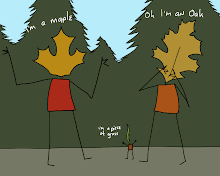Question: Reggae had the ability to break class and race barriers in Britain, do you think that Hip-Hop did the same in the U.S.?
Wednesday, April 8, 2009
Back's "New Ethnicities and Urban Culture," Part 2, Critical Review
In the second part of Chapter 8 in "New Ethnicities and Urban Culture," Back explores the different amounts of inter-racial happenings that occur in the black musical scene in the UK, the development of a south Asian music culture, and the recent dance-hall culture of the 90's. As boundaries were breached by certain posses and sound systems, such as Soul II Soul, the separation between reggae and soul in the 70's became harder and harder to distinguish. Social mixing was primarily seen in soul music spaces, but with the breakdown of the separation between soul and reggae, races, as well as different classes and genders, began mixing and intermingling more throughout genres. MC Apache Indian helped to increase this mixing of too. After the emergence of bhangra music in Britain, a distinct British Asian culture developed, and Apache Indian helped to spread this music (well, his music was described as bhangramuffin) throughout races, as he was able to play to crowds of blacks, whites, and Asians. In the 90's, a new fusion of reggae/hip hop/ragga began to emerge, jungle. Jungle helped to even further bring together different people. DJ Kenny Ken puts it perfectly when he says, "certain men a few years ago wouldn't have dreamed of talking to a white person and the same the other way around... but now we're under the same roof ravin', laughing and joking together..." (p. 234) With the development of newer variations on the reggae sound system music, and the breaking down of boundaries between genres, different people more easily and more readily mixed. The music had the great ability to overshadow wider distinctions such as race, class and gender.
Subscribe to:
Post Comments (Atom)

No comments:
Post a Comment